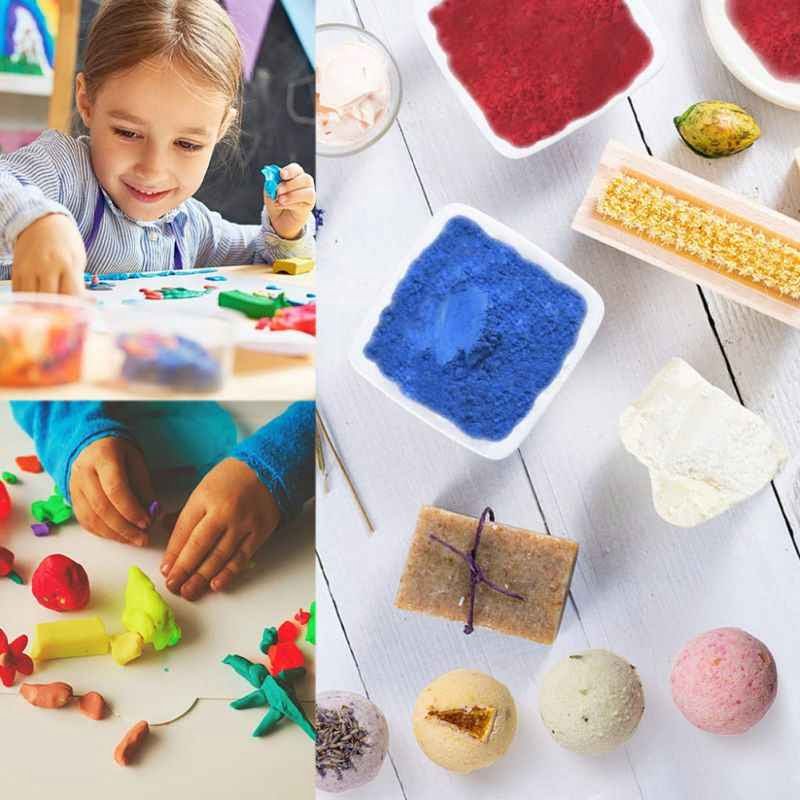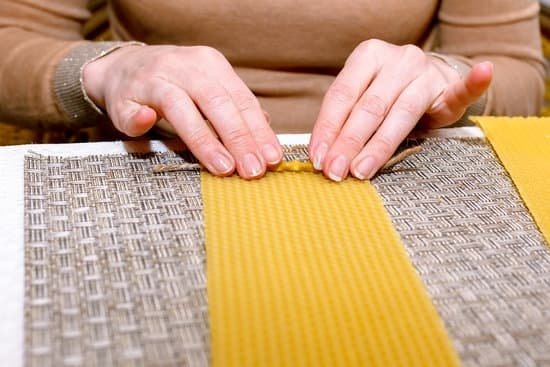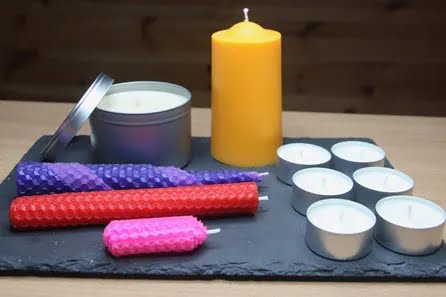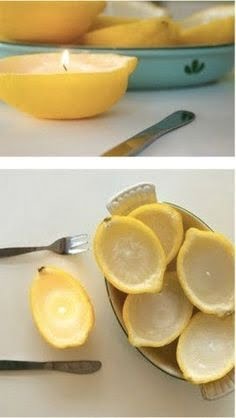Candle making is a craft that has been enjoyed for centuries, providing both practicality and beauty to our homes. Whether you are looking to create a soothing ambiance, or simply want to add a personal touch to your space, candle making offers endless possibilities. In order to get started on this fulfilling journey, it is important to understand the basics and gather the necessary materials.
To embark on your candle making adventure, there are a few essential supplies that you will need. First and foremost, you will need wax. There are various types of wax available in the market, each with its own unique qualities and melting points.
Additionally, you will require wicks, which come in different sizes and materials such as cotton or wood. Other important materials include fragrance oils or essential oils for scenting your candles, candle dyes or pigments for adding color, as well as equipment like a double boiler or melting pot for melting the wax.
As you delve into the world of candle making, understanding these basics will set a solid foundation for your creative endeavors. In the following sections of this article, we will take a closer look at each component, from exploring different types of wax options to selecting the right wicks for optimal burn quality.
We will also explore how to enhance your candles with fragrance oils and essential oils while introducing various methods of adding color through dyes and pigments. Furthermore, we’ll discuss essential tools and equipment required for safe and efficient candle making processes.
So let’s dive in and discover all there is to know about the fascinating art of candle making and all the wonderful materials needed to bring your visions to life.
Understanding the Basics
The first step in the world of candle making is to understand the essential supplies needed to create your own candles. By having a good understanding of these basic supplies, you can ensure that you have everything you need to begin your candle making journey.
The most important supply you will need is wax. Candle wax is available in various types, each with its own unique characteristics that affect the appearance and performance of your finished candles. The four most commonly used waxes for candle making are paraffin wax, soy wax, beeswax, and palm wax. Each type has its own melting point, scent throw, and burn time, so it’s essential to choose the right wax for your desired outcome.
Alongside the wax, you will also need a heat source to melt it. This can be achieved by using either a double boiler or a melting pot specifically designed for candle making. A double boiler consists of two pots – one larger pot filled with water and another smaller pot placed inside it containing the wax. The water in the larger pot creates indirect heat that melts the wax gently without burning it.
Once your wax is melted, you will need containers or molds to pour it into. There are various options for containers including glass jars, metal tins, ceramic vessels, or even recycled containers like mason jars or tea cups. The choice of container depends on the style and aesthetic you want to achieve.
In addition to these basics, other essential supplies include wicks (which will be covered in more detail in a later section), fragrance oils or essential oils (for adding scents), colorants (such as liquid dyes or powder pigments), an accurate scale for measuring ingredients precisely, a thermometer for monitoring temperatures during melting and pouring process, and a stirring utensil like wooden dowels or stainless steel spoons.
Understanding these essential candle making supplies will give you a solid foundation for starting your candle making journey. With these basics in place, you can move on to explore the various wax options, wick choices, fragrance oils, and decorative elements that will help you create beautiful and fragrant candles.
Choosing the Perfect Wax
When it comes to candle making, choosing the right wax is crucial in achieving the desired results. There are several different types of wax available on the market, and each has its own unique characteristics that can affect the appearance, burn time, and scent throw of your candles. In this section, we will take an in-depth look at some of the most popular candle wax options.
1. Paraffin Wax: Paraffin wax is one of the most commonly used waxes in candle making. It is a byproduct of crude oil refining and is known for its affordability and ease of use. Paraffin wax has a low melting point, which allows it to release fragrance easily when burned. However, it can produce soot and may not be suitable for those with respiratory issues.
2. Soy Wax: Soy wax is another popular choice among candle makers due to its natural composition and clean-burning properties. It is made from soybean oil and produces little to no soot when burned. Soy wax has a lower melting point compared to paraffin wax, which may result in slightly shorter burn times.
3. Beeswax: Beeswax is an all-natural option that has been used for centuries in candle making. It offers a sweet, honey-like scent and creates a warm, golden glow when lit. Beeswax candles have a longer burn time compared to other waxes but can be more expensive.
| Type of Wax | Main Features | Potential Drawbacks |
|---|---|---|
| Paraffin Wax | Affordable and easy to use; releases fragrance easily | Can produce soot; may not be suitable for those with respiratory issues |
| Soy Wax | Natural and clean-burning; produces little to no soot | Lower melting point may result in slightly shorter burn times |
| Beeswax | All-natural option; offers a sweet scent and longer burn time | More expensive compared to other waxes |
These are just a few examples of the different candle wax options available. Other types of wax include palm wax, coconut wax, and gel wax. Each type has its own unique set of characteristics that can enhance your candle-making experience. It is important to consider factors such as burn time, scent throw, and personal preferences when choosing the perfect wax for your candles.
Igniting the Flame
Candle wicks play a crucial role in the performance and aesthetics of candles. They are responsible for igniting the flame and ensuring a consistent and even burn throughout the candle’s lifespan. Choosing the right candle wick requires careful consideration of factors such as the type of wax, diameter of the container, desired burn time, and personal preference. This section will guide you through the process of selecting the perfect candle wick for your project.
Understanding Candle Wick Types
There are various types of candle wicks available in the market, each with its own unique characteristics and performance. The three most common types are cotton wicks, paper-core wicks, and wooden wicks.
– Cotton Wicks: Cotton wicks are widely used in candle making due to their versatility. They come in different thicknesses or sizes based on their ability to draw up liquid wax. Smaller diameter cotton wicks work well for votive candles or those with a narrower diameter, while larger ones suit larger containers or pillar candles.
– Paper-Core Wicks: Paper-core wicks have a cotton exterior and inner paper core that offers greater stability during burning. The paper core helps support longer burn times by acting as a reservoir for liquid wax. These wicks are ideal for container candles or those made with softer natural waxes like soy or coconut.
– Wooden Wicks: Wooden wicks give candles a unique aesthetic appeal with their crackling sound reminiscent of a cozy fireplace. They also offer excellent scent throw due to their wide surface area. Wooden wicks may require trimming before each use to maintain an optimal 1/8 to 1/4 inch length.
Determining Wick Size
Selecting the appropriate size of candlewick is vital to achieve an efficient burn without issues like excessive smoking or tunneling (uneven wax melting). To determine the correct wick size, consider factors such as the candle’s diameter, type of wax, and desired burn time. Most wick manufacturers provide charts or guidelines for selecting wicks based on these factors.
Additionally, it is advisable to conduct test burns when working with a new type of wax, container, or fragrance combination. This involves creating small test candles using different sizes of wicks and monitoring their burn characteristics. Evaluating the melt pool size and stability will help identify the optimal wick size for achieving an even burn.
By understanding the different types of candle wicks available and considering factors like wax type and container diameter, you can select the right wick that ensures a safe and efficient burn while complementing your unique candle-making project. The selection process may require some trial and error, but with proper testing and attention to detail, you’ll be able to create beautiful candles that burn beautifully.
Enhancing Fragrance
When it comes to candle making, one of the most exciting aspects is choosing the right fragrance. The aroma of a candle can create a specific atmosphere and elicit different emotions in its surroundings. In this section, we will delve into enhancing the fragrance of your candles by exploring essential oils and fragrance oils.
Essential oils are natural plant extracts that are known for their aromatic properties. They are extracted from various parts of plants such as flowers, leaves, stems, and even roots. Essential oils offer a wide range of scents, from floral and citrusy to earthy and woody. Some popular essential oils used in candle making include lavender, eucalyptus, vanilla, and lemongrass.
On the other hand, fragrance oils are synthetic fragrances created in a laboratory. These oils are created to mimic specific scents such as fruits, desserts, or even unique combinations like “ocean breeze” or “autumn spices.” Fragrance oils provide an extensive range of scents that may not be naturally occurring but can be highly appealing.
When choosing between essential oils and fragrance oils for your candles, consider the purpose and desired effect you want to achieve. Essential oils often provide more natural and subtle scents while fragrance oils offer a broad variety and stronger fragrances. Additionally, essential oils tend to be more expensive than fragrance oils due to their extraction process.
Both essential oils and fragrance oils should be added to candles at specific temperatures during the melting process or when mixing them with the wax. It’s important to follow recommended guidelines for each oil as some may have different flashpoints or may require dilution before use. Experimenting with different combinations of essential and fragrance oils can lead to unique scent profiles that reflect your personal preference or suit particular occasions or seasons.
Adding a Splash of Color
Adding color to candles is a fun and creative way to personalize your creations. There are various types of candle dyes and pigments available, each with its own unique qualities. Whether you want to create vibrant, bold colors or soft, pastel hues, there is a dye or pigment that will suit your needs.
- Liquid Dyes: Liquid dyes are the most common type of colorant used in candle making. They come in a wide range of colors and are typically sold in small bottles with dropper caps for easy measurement. Liquid dyes are highly concentrated, so a little goes a long way. They mix easily with liquid wax and allow for precise color control.
- Dye Blocks: Dye blocks are solid blocks of concentrated colorant that can be shaved or grated into wax to achieve the desired shade. They offer excellent color saturation and are ideal for achieving deep, rich tones. Dye blocks require experimentation to determine the right amount needed for desired results.
- Powdered Pigments: Powdered pigments are finely ground coloring agents that can be mixed directly into melted wax. They offer intense color payoff and work well for creating marbled or layered effects in candles. However, it’s important to note that powdered pigments can be messy and may require pre-mixing with a small amount of liquid before incorporating them into the wax.
In addition to these types of candle dyes and pigments, there are also natural alternatives available, such as botanical powders or dried plant materials that can be used for coloring candles. These options provide earthy tones and add an organic touch to your creations.
When working with candle dyes and pigments, it’s essential to remember a few key tips:
- Start with a small amount of colorant and gradually add more until you achieve the desired shade. It’s easier to add more color than to remove it once it’s been added to the wax.
- Keep in mind that different waxes can produce different results with the same colorant. It’s recommended to conduct test batches using various waxes and colorants to determine which combinations work best for your desired outcome.
- Properly mix or stir the dye or pigment into the wax to ensure an even distribution of color. Uneven mixing can result in inconsistent coloring in your finished candles.
With a wide variety of candle dyes and pigments available, you have endless options for adding a splash of color to your candles. Experimentation is key, so don’t be afraid to mix and match different colors and techniques to create unique and beautiful designs. Let your creativity shine through with every candle you make.
The Right Tools for the Job
When it comes to candle making, having the right tools and equipment is essential for a successful and enjoyable experience. Here is a list of the essential equipment and supplies you will need:
- Candle molds: These come in various shapes and sizes and are used to give your candles their desired form. You can choose from metal, silicone, or plastic molds depending on your preferences.
- Double boiler or melting pot: This is used to melt the wax safely and evenly without scorching it. A double boiler consists of a smaller pot placed inside a larger one filled with water. Alternatively, you can use a melting pot specifically designed for candle making.
- Thermometer: To ensure that your wax reaches the optimal temperature for pouring, a thermometer is crucial. Different types of waxes require different temperatures, so make sure to use a thermometer that can accurately measure the range you need.
- Pouring pitcher: A heat-resistant pouring pitcher makes it easier to transfer melted wax into molds without creating a mess or wasting any wax. Look for pitchers with spouts that provide precise pouring control.
- Candle wicks: While choosing the right type of wick will be covered in another section, it’s important to have them on hand when starting your candle-making journey. Make sure to have an assortment of different sizes and materials such as cotton or paper core wicks.
- Wick holders: These are small metal or plastic devices that keep the wick centered while the wax solidifies during cooling. They help prevent uneven burning and ensure that your candles retain their shape.
- Fragrance oils or essential oils: Adding scent to your candles can enhance their ambiance and create an inviting atmosphere. Whether you prefer natural essential oils or synthetic fragrance oils, having a variety of scents allows you to experiment and create unique combinations.
- Dyes or pigments: If you want to add color to your candles, dyes and pigments are essential. These can be in liquid or chip form, and it’s best to choose dyes that are specifically made for candle making to ensure long-lasting and vibrant colors.
Having the right tools and supplies not only makes candle making easier but also allows you to unleash your creativity and explore different techniques. Remember to follow safety guidelines when using these materials to ensure a safe and enjoyable candle-making experience.
Getting Creative
When it comes to candle making, the creative possibilities are endless. Beyond just creating a beautiful and fragrant candle, you can also add decorative elements and embellishments to enhance the overall aesthetic appeal. In this section, we will explore some creative ideas for taking your candle making to the next level.
Embedding Objects
One way to make your candles truly unique is by embedding objects into the wax. This could include dried flowers, seashells, gemstones, or even small trinkets. To do this, simply pour a layer of melted wax into your container and let it cool slightly until it forms a skin-like consistency. Then place your chosen object onto the surface and gently press it down. Pour more melted wax over the top and let it completely harden.
Layering Colors
Another fun way to add visual interest is by creating layered candles with different colors. Start by pouring a thin layer of one color into your container and allow it to cool and harden. Then carefully pour another color on top and repeat the process until you have achieved the desired number of layers. Experiment with different color combinations for a stunning effect.
Creative Container Options
Think outside of traditional glass containers when it comes to choosing vessels for your candles. You can repurpose vintage teacups, mason jars, or even hollowed-out fruit peels as unique containers for your candles. Not only does this add a touch of creativity to your creations, but it also makes for great conversation pieces when displaying or gifting your candles.
Remember, the key to getting creative with decorative elements and embellishments is to experiment and have fun with different ideas. Don’t be afraid to think outside of the box and try new techniques or materials that inspire you. The possibilities are limitless, so unleash your artistic side and create candles that are not only functional but also works of art.
Safety First
Proper handling and storage of candle making materials is crucial to ensure a safe and enjoyable candle making experience. By following best practices, you can minimize the risk of accidents, prevent damage to your supplies, and make the most out of your candle making journey.
When it comes to handling candle making materials, it’s important to prioritize safety. Always work in a well-ventilated area to avoid inhaling fumes from melting wax or fragrance oils. Additionally, wear appropriate protective gear such as gloves and goggles to protect yourself from burns or chemical exposure.
Another key aspect of safe handling is proper storage. Keep your candle making materials away from heat sources and direct sunlight, as this can cause them to degrade or melt prematurely. It’s also important to store your supplies in a dry place to prevent moisture from damaging them. Consider using air-tight containers or bags for items like wax, fragrance oils, and dyes to keep them fresh and free from contaminants.
Furthermore, be mindful of how you handle different materials. For instance, when working with hot wax or melted fragrances oils, use tools like heat-resistant containers or double boilers to minimize the risk of spills or burns. Always read labels and follow instructions provided by the manufacturers for proper usage and handling of specific products.
By prioritizing safety in your candle making practice and ensuring proper handling and storage of materials, you can enjoy a worry-free creative process while protecting yourself and prolonging the lifespan of your supplies. Remember that practicing good safety habits not only benefits you but also those around you who may be affected by potential hazards associated with candle making.
Taking it Further
In conclusion, the world of candle making is vast and can offer endless opportunities for creativity and expression. By understanding the basics of essential supplies such as wax, wicks, fragrance oils, dyes, and equipment, you can start your candle-making journey with confidence. However, if you are eager to expand your skills and knowledge in this craft, there are additional resources and advanced techniques available.
One way to take your candle making to the next level is by exploring different resources. Books, online tutorials, workshops, and communities dedicated to candle making can provide a wealth of information and inspiration. These resources can teach you advanced techniques like creating complex candle designs, experimenting with unique additives such as herbs or crystals, or even how to make specialized candles like soy wax or beeswax.
Another aspect to consider when taking it further in candle making is exploring advanced techniques. This includes trying out different types of molds for custom-shaped candles or learning about more intricate pouring techniques like layering or embedding objects within the wax. Advanced techniques also involve experimenting with different waxes such as palm wax or gel wax that offer unique characteristics and effects.
Finally, remember that practice makes perfect in any craft. Don’t be afraid to experiment and try new things in your candle making journey. Each batch of candles presents an opportunity to learn and grow as a candle maker. So go ahead and unleash your creativity by taking advantage of additional resources and exploring advanced techniques – you may just discover new possibilities that elevate your passion for this art even further.

Welcome to my candle making blog! In this blog, I will be sharing my tips and tricks for making candles. I will also be sharing some of my favorite recipes.





